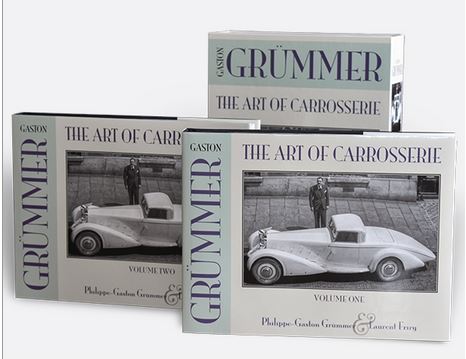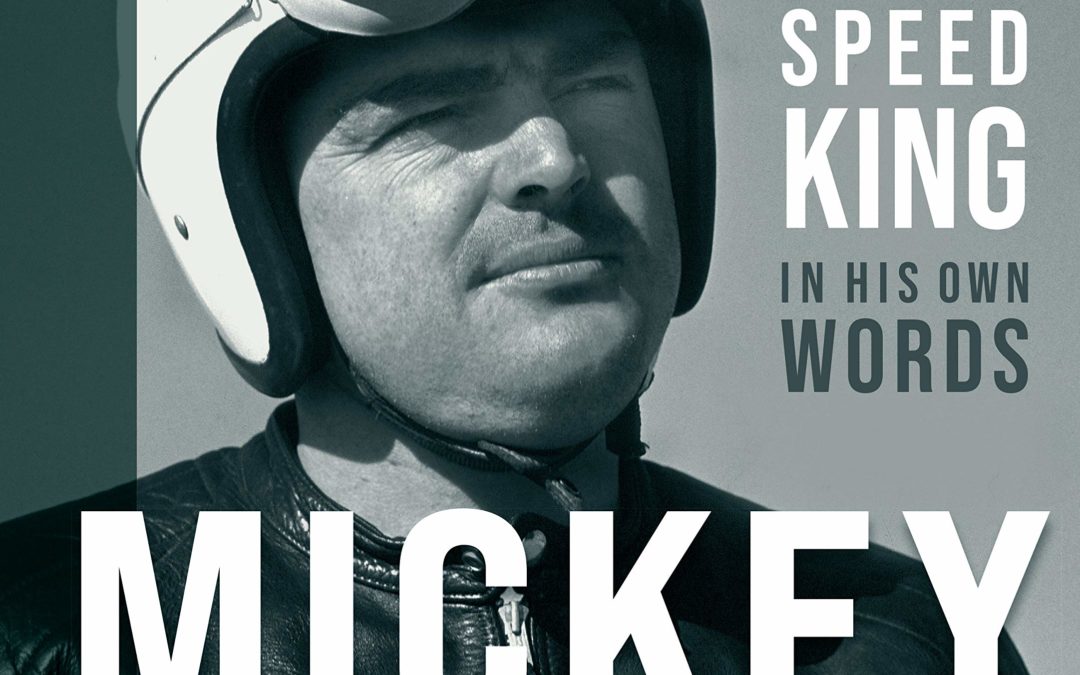
Mickey Thompson offers a now-impossible (Thompson and his wife were murdered in 1988) first-person telling of the legendary racer and motorsport impresario’s high-speed life, from his earliest days through the height of his competition exploits on drag strips, at Bonneville, the Indy 500, Baja, and more—complemented by some 200 rare images culled from family archives, the NHRA museum, and the collections of friends and fellow racers.
Four decades after his tragic death, Mickey Thompson’s name and accomplishments remain legendary among motorsports and automotive enthusiasts. Thompson did it all on four wheels: land-speed racing, drag racing, off-road, NASCAR, Indianapolis…anything involving speed. Armed with a restless mind and a keen business sense, Thompson moved from success to success.
In the early 1970s, motorsports writer (and former drag racer) Tom Madigan and Thompson embarked on a project to write the latter’s autobiography. After two years, extensive interviews, and a near-finished manuscript the whole enterprise fell apart for a number of reasons. Type-written sheets, neatly stacked, were boxed, stored, and mostly forgotten.
Mickey Thompson: The Untold Story of the Original Speed King is that never-published work—an amazing biographical artifact from what many consider the golden age of automotive racing.
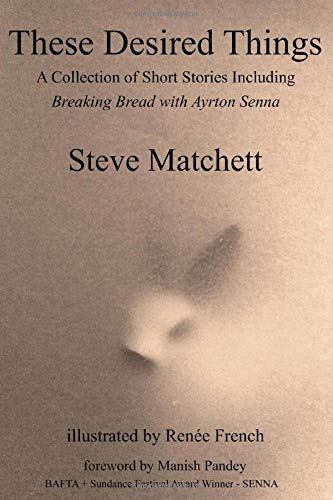
These Desired Things, Steve Matchett’s much anticipated fourth book, is a stimulating, philosophical offering; a tour de force in creative writing. Although, defining the book’s genre seems largely superfluous, for its immersive, lyrical text is part fiction, part memoire, part autobiography. Complete with a suitably insightful foreword by Manish Pandey (writer of SENNA – the movie) and with its chapters illustrated throughout by the visually enthralling artwork of Renée French, Matchett’s new book is both engaging and exceptionally pleasing on the eye.The chapters of the work are presented as a collection of eleven short stories: all of them varying in their individual plots, their settings and their style, yet all of them remain essential elements of the whole; for running through each is a series of subtle, uniting threads. And through Matchett’s captivating telling of these affectionate tales, the author’s (already renowned) written ‘voice’ attains a whole other level of intimacy: The reader feels truly bonded to the writer’s emotions.It is also encouraging to note, These Desired Things is no continuation of the author’s previous works: Matchett’s F1 trilogy stands complete. This latest book, therefore, represents a refreshing new mission. Indeed, by introducing to us his pair of delightful (if mysterious) fictional characters, creations so readily brought to life by the author in two of this book’s short stories – The Chestnut Tree and The Shadows Cast of Candlelight – it seems that Matchett is already laying out his plans for a future novel.Undoubtedly, the diversity of all eleven stories – and the inimitable style of the storytelling – is sure to introduce a whole new readership to Matchett’s writing. That said, the author has been most careful to include stories that will appeal to those already familiar with his earlier books – those readers with a knowledge and passion for Formula 1 motor racing. And, most likely, these same passionate readers will be moved to tears on reaching the closing lines of the book’s penultimate chapter, Breaking Bread with Ayrton Senna.Steve Matchett gives abridged readings of this truly atmospheric story during his public appearances, his after-dinner events. Now, however, for the first time in print, this most endearing homage to the fallen, three-time world champion driver, Ayrton Senna, is presented in its full, unabridged form.
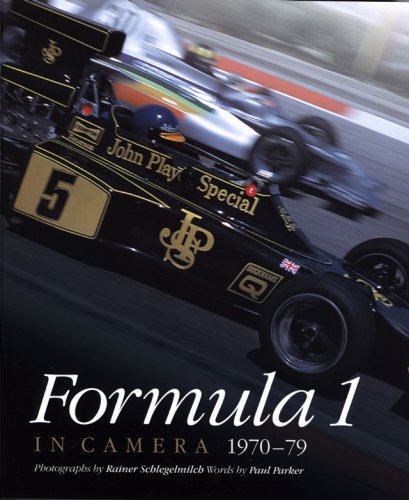
This beautifully illustrated, deeply nostalgic book examines the evolution of the Grand Prix genre through one of its classic decades, when the sport moved into the increasingly commercial and high-tech era. It is also the story of how sponsors took over the main identity of the teams, with the sport becoming global as the English-speaking drivers were joined by newcomers such as Emerson Fittipaldi, Ronnie Peterson, Jody Scheckter, Niki Lauda and Nelson Piquet.
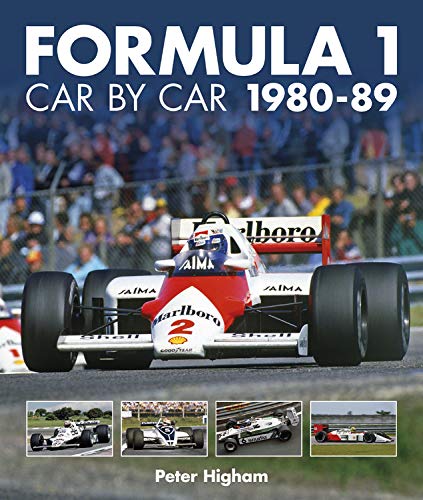
This book is the third in Evro’s multi-volume, decade-by-decade series covering the entire history of Formula 1 through its teams and cars. This installment examines the 1980s, when the sport moved into its spectacular turbo era, first with Renault, Ferrari and BMW-powered Brabham, then with sustained periods of success for McLaren with Porsche-made TAG engines and Williams with Honda power. After the last win for the evergreen Ford Cosworth DFV in 1983, turbos prevailed until regulation change for 1989 brought back normally aspirated engines, now of 3.5 litres. Besides Formula 1’s high achievers, this book also covers the entire supporting cast, where much curiosity lies in discovering the travails of obscure and unsuccessful cars. This wide-ranging, colorful and authoritative book will be treasured by all Formula 1 fans.
- Year-by-year treatment covers each season in fascinating depth, running through the teams — and their various cars — in order of importance.
- Two teams dominated the decade, McLaren and Williams taking all but two of the drivers’ and constructors’ titles: McLaren’s World Champions were Niki Lauda (1984), Alain Prost (1985, 1986 and 1989) and Ayrton Senna (1988), while Williams’s were Alan Jones (1980), Keke Rosberg (1982) and Nelson Piquet (1987).
- The two other significant winning teams were Brabham, which took Nelson Piquet to two drivers’ titles (1981 and 1983), and Ferrari, which won two constructors’ titles (1982 and 1983).
- Other winning marques were Benetton, Ligier, Lotus, Renault and Tyrrell.
- Over 600 photos — entirely in color and all from the magnificent archives of LAT Images — show every type of car raced by every team and driver, presenting a comprehensive survey of all participants.
- The sweep of the decade covers sustained technical advances, particularly in carbon-fiber construction and ever-increasing power outputs.
- Detailed text includes car specifications and technical essentials.

In this long-awaited follow-up to the best-selling first edition of How to Draw Cars Like a Pro, renowned car designer Thom Taylor goes back to the drawing board to update his classic with all-new illustrations and to expand on such topics as the use of computers in design today. Taylor begins with advice on selecting the proper tools and equipment, then moves on to perspective and proportion, sketching and cartooning, various media, and light, shadow, reflection, color, and even interiors. Written to help enthusiasts at all artistic levels, his book also features more than 200 examples from many of today’s top artists in the automotive field. Updated to include computerized illustration techniques.
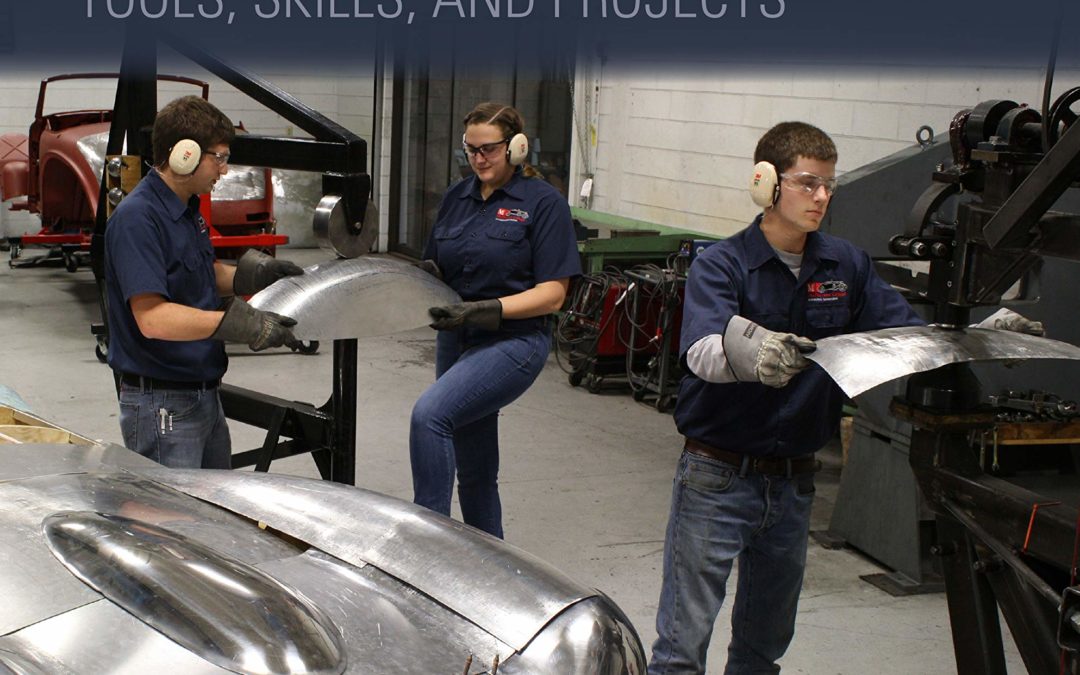
Whether you want to create custom or replacement parts or build an entire automobile body, this metalworking course for gearheads from best-selling automotive restoration author and professor Ed Barr will take you as far as your interests reach. Barr demystifies this seemingly black art with information on tools and basic skills and 14 customizable projects, fully illustrated with step-by-step color photography.
First, you’ll learn how to assemble your ideal toolkit, as well as how to build a power hammer and an English wheel. In the process, Barr will help you make informed choices based on available space and budget. Once you’re all set up, he addresses the concepts of shape and form.
The projects are presented in a way that you can easily apply them to their own vehicles, whatever they may be. Barr also takes the time to show how the projects can be accomplished with different available tools. As you go, you’ll gain the skills and confidence for tackling the increasingly complex cases presented. Work your way up to building a fender utilizing the wheeling machine you built earlier; then move on to building a Model T speedster body and an Indy car, and later a challenging ’â??34 Plymouth fender. The book even includes common “goofs” and how to avoid and, if necessary, correct them.
Written in an engaging and approachable style, Sheet Metal Shaping serves equally well as a useful supplement to Barr’s previous Professional Sheet Metal Fabrication or as a must-have standalone volume for any fabricator’s library.
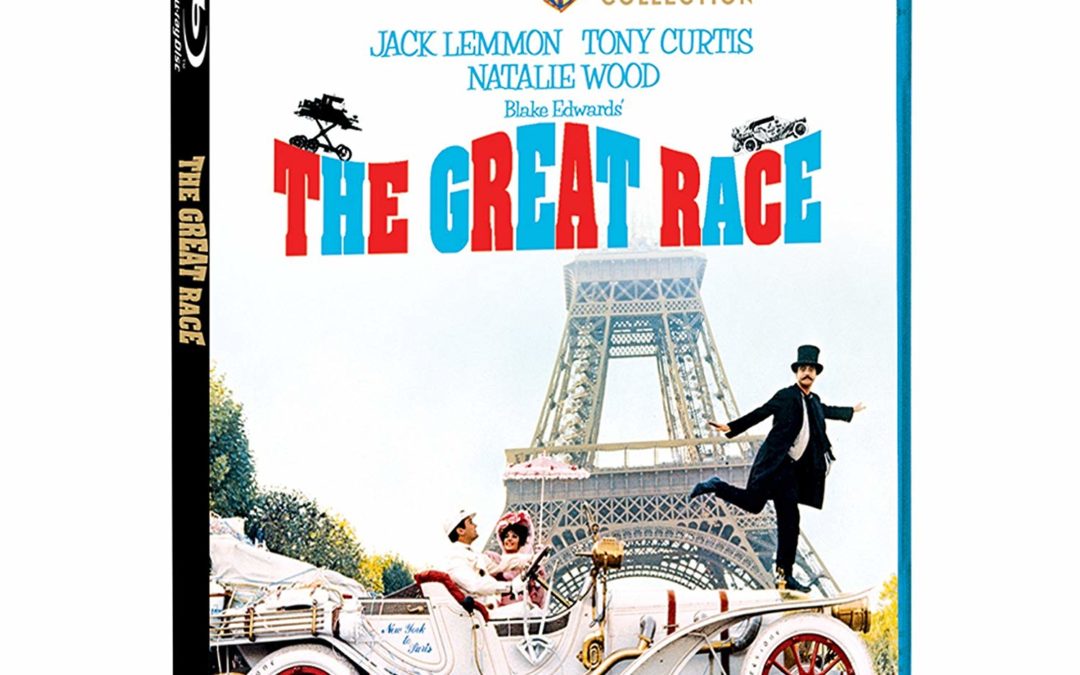
Tony Curtis stars as The Great Leslie, a hero among heroes whose purity of heart is manifested by his spotlessly white wardrobe. Leslie’s great rival, played by Jack Lemmon, is Professor Fate, a scowling, mustachioed, top-hatted, black-garbed villain. Long envious of Leslie’s record-setting accomplishments with airships and sea craft, Professor Fate schemes to win a 22,000-mile auto race from New York City to Paris by whatever insidious means possible. The problem is that Fate is his own worst enemy: each of his plans to remove Leslie from the running (and from the face of the earth) backfires. Leslie’s own cross to bear is suffragette Maggie Dubois (Natalie Wood), who also hopes to win the contest and thus strike a blow for feminism. The race takes all three contestants to the Wild West, the frozen wastes of Alaska, and, in the longest sequence, the mythical European kingdom of Carpania. This last-named country is the setting for a wild Prisoner of Zenda spoof involving Professor Fate and his look-alike, the foppish Carpanian king. When Leslie and Fate approach the finish line at the Eiffel Tower, Leslie deliberately loses to prove his love for Maggie. Professor Fate cannot stand winning under these circumstances, thus he demands that he and Leslie race back to New York.

Travel back in time to a colorful period in commercial aviation at one of the most fascinating airports in the world. Embark on a visual tour of airlines and aircraft that have since departed forever. From the once powerful carriers such as Trans World Airlines (TWA) and Continental Airlines to the smaller, lesser known commuter airlines that lasted only a few months. With stunning photographs and full, descriptive captions, Departed Wings-Los Angeles is a visual tribute to the exciting decade after airline deregulation and the airlines and liveries that came and went.
It has been forty years since the Airline Deregulation Act was signed into law in October 1978, and the far reaching effects of the act continue to be felt today. Intended to remove strict oversight by the government on airline routes, fares, and services, the Airline Deregulation Act fostered competition, development of a hub-and-spoke system, as well as entry of new airlines in this “free” market. The decade following the Airline Deregulation Act saw several airlines both large and small start operations hoping to establish business in a specific niche market.
In the first of a series of hardbound books, Departed Wings-Los Angeles LAX, is a visual tribute to the post-deregulation decade at one of the most famous airports in the world. Los Angeles was host to numerous start-up airlines as the result of deregulation, as well as a strong-hold to major domestic carriers and international airlines that placed LAX on their route maps. With ninety, spectacular photographs and detailed, descriptive captions explaining the history of the various airlines and aircraft that transited LAX during the years 1980-1990, Departed Wings-Los Angeles LAX is sure to rekindle memories of one of the most exciting eras in commercial aviation.
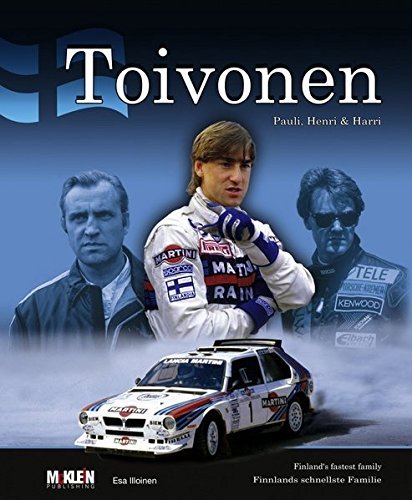
When rally fans hear the name Toivonen, they immediately think of breathtaking performances and glorious victories. But it is also hard to forget the accident on the 1986 Tour de Corse that took the lives of Henri Toivonen and his co-driver Sergio Cresto and which eventually brought Group B rallying to an end. Henri was one of the most exceptional rally drivers in history. His inspiring performances in the Talbot Sunbeam Lotus, Opel Ascona 400, Porsche 911 SCRS and Lancia Rally 037 are all well-remembered. But it was the Lancia Delta S4 that really showcased Henri’s ability with victories in the RAC and Monte Carlo rallies, the latter twenty years after his father’s own triumph in the Principality. This book tells the fascinating story of the Toivonen family in rallying and racing. It starts with father Pauli’s heroic drives in the 1950s and 1960s, including winning the European Rally title of 1968 at the wheel of a Porsche 911. It moves on to include the first exploits of the next generation on frozen lakes right up to the contrasting careers and fortunes of Henri and brother Harri in motor sport. Author Esa Illoinen immersed himself deeply in the Toivonen family history and spoke to innumerable friends and witnesses of those days. Amongst them were with Pauli’s widow, Ulla, Henri’s widow, Erja, and even Henri’s 95-year old English teacher. The result is an intimate and touching portrait of Finland’s fastest family, wonderfully illustrated by the best images from the inexhaustible McKlein archive.

A fascinating history of European motorcycle racing, going back to a period far removed from the world of Moto GP today: a time when many young men from all walks of life decided to give up their livelihoods in favour of earning their living by racing motorcycles on the dangerous public road circuits of the European Continent. It was a nomadic existence that involved travelling from circuit to circuit, circus fashion, hence the title ‘Continental Circus.’ Motorcycle Racing with the Continental Circus 1920 to 1970 begins with the pre-war period, when many young British riders travelled to the Continent to take part in the Grand Prix races, held from around 1920 and across Europe. British riders such as Alec Bennett, Stanley Woods, Jimmy Guthrie and many more, gained notable success and established their reputations on the European circuits. Moving on to the post-war era, the book details the riders from around the world who joined the Circus – self-financed ‘privateers’ from Australia, New Zealand and South Africa. The 1950s and ’60s were the days of the true Continental Circus, when private riders earned their living riding all over the continent. The book also covers the development of the machines that became the essential tools of the private riders, and the eventual demise of the Continental Circus in the 1970s, due to new safety regulations and the escalating cost of racing. Chris Pereira’s historical account is sourced both from first-hand experience of racing, and from his own vast library of racing history records and photographs.
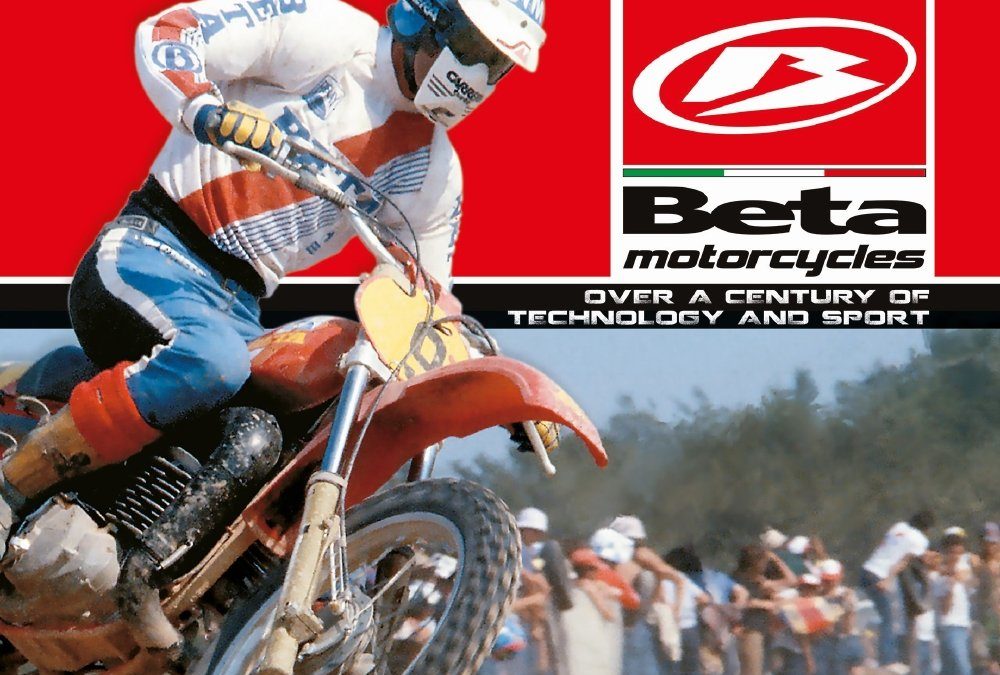
This book covers the long history, from its origins through to the present day, of the historic Italian manufacturer Beta Motorcycles, active in the two-wheeled world for over 100 years, presenting previously unpublished material.
A particularly versatile firm, Beta Motorcycles has proved capable of diversifying its products–building all kinds of motorcycles–and satisfying the mutating demands of its clientele. The Florentine marque built its own two- and four-stroke engines in-house, but has always been open to joint ventures with other European or Japanese firms.
Founded as a bicycle manufacturer, Beta Motorcycles moved into the moped market in the 1960s, off-road motorcycles in the late 1970s, enduro models in the following decade and then scooters, for over 20 years, not to mentions the Trial sector in which it conquered eight World Championship titles. In more recent years the company has returned to the “classic” Motocross and Enduro categories and in 2016 collected a further two world titles, including the Constructors’ Championship.
The book features a comprehensive catalog of every model and every engine produced by Beta Motorcycles over more than a century.
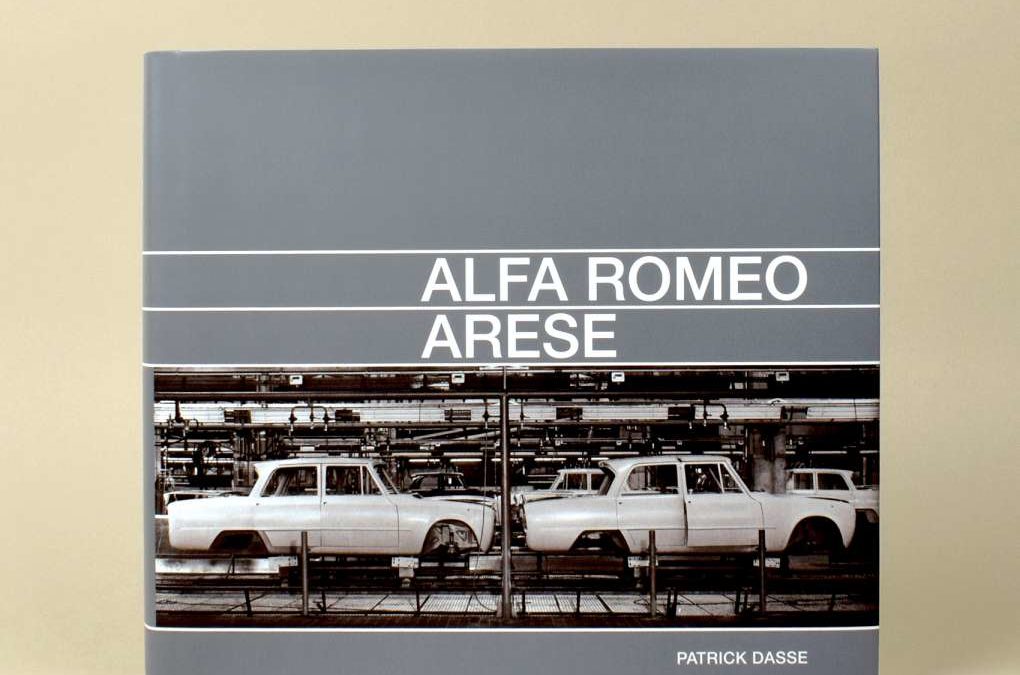
In 1963 the first section of Alfa Romeo’s new production and assembly plant in Arese became operational. From then on the bodies of both the saloon and the coupé of the Tipo 105 would be produced there. Final assembly of the cars would also be carried out in Arese, although the engine and various other mechanical components were still made in the old works in Portello at that time. Production of these parts would be moved to Arese over the following years as shop floor space was completed and made available.
Fortunately over the years much of the production process of the various Tipo 105 models was photographed.
This is a book for the enthusiast who is interested in seeing how car components and Tipo 105 cars were produced, a model which still today is considered to have played an important role in Alfa Romeo’s enviable reputation.
The photographs in this book, for the most part published for the very first time, were taken in Portello and Arese between the years 1963 and 1972 and document the production of the Tipo 105 models at the works.
384 pages, 364 black and white photographs.
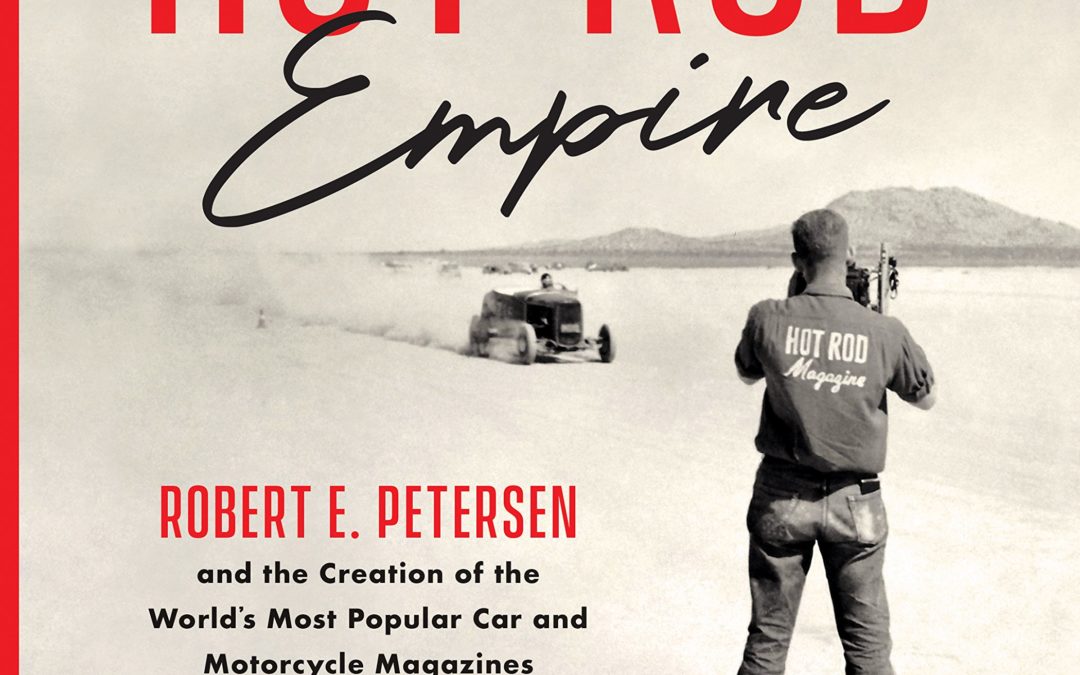
Hot Rod Empire details Robert E. Petersen’s creation of Hot Rod Magazine in the 1940s and the Petersen Publishing empire that grew to the mainstream juggernaut we know today.
The end of World War II marked the release of pent-up war-years energy and the desire to live. For many this meant indulging in long-denied purchases, like a new car. For another group, including young vets, it meant a return to car building and racing. Money, exciting new cars, and speed parts all flowed freely in post-war America.
Robert Petersen, a young SoCal-based photographer and Army Air Corps vet, noted the rapidly growing hot rod scene in and around Los Angeles. His first move was to organize the Los Angeles Hot Rod Exhibition in 1948. His second, and brilliant, move was to launch at the same event the first edition of Hot Rod magazine. From this launch pad, Petersen Publishing Company would grow to become the most influential enthusiast publisher in America.
Petersen’s magazines were rallying points for all aspects of the car, truck, and motorcycle hobbies, well as nurturing and promoting all aspects from car building to racing to show events. Hot Rod, Motor Trend, Car Craft, Motorcyclist, Off-Road and Four Wheel Drive and some 75 other enthusiast titles dominated magazine racks and provided substantial influence over transportation and numerous other hobbies.
Hot Rod Empire celebrates the birth and explosive growth of the transportation hobby under Petersen’s watch.
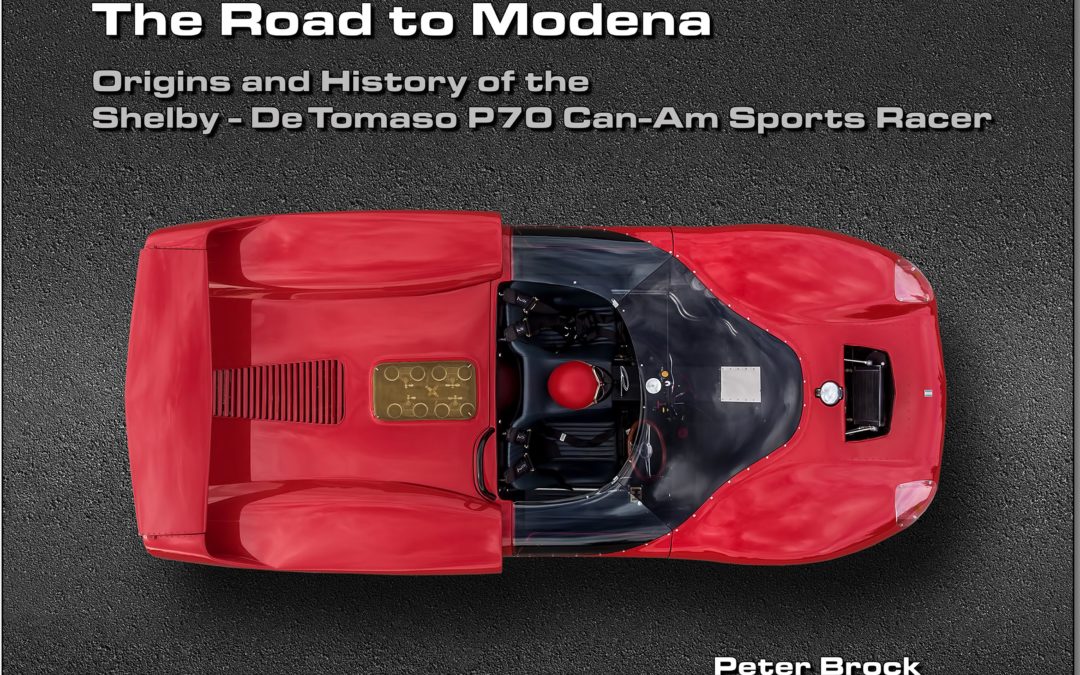
Origins and History of the Shelby – De Tomaso P70 Can-Am Sports Racer
In this book I cover my years at Shelby American with a focus on the time I spent in Modena, Italy designing the Shelby – De Tomaso P70 for Carroll Shelby, a car planned for the emerging Can-Am series.
Working in Modena was one of the best experiences of my life. I started to write the history and creation of the P70, and the stunning body construction techniques I learned from the Italian artisans, when I realized I had to put the car in context of this incredible time period and also describe what was happening with Carroll’s numerous projects, racing and the other cars I was designing.
I share the transition from the Cobra’s first appearance in ‘62 to its championship in ’63, through to the King Cobra USRRC race period to the transition to Can-Am. Shelby’s every move was well thought out and intentional, all with the ultimate goal of getting Ford’s lucrative GT40 program but having contingency plans in case it didn’t happen. Shelby’s venture with Alejandro de Tomaso on the P70 was one of those contingencies.
Looking back, these few short years turned out to be some of the most interesting and innovative in sports racer history. The quest to understand and harness air flow and ground effects led to amazing creativity. The Can-Am race series showcased it to the world.
My designs during this period at Shelby’s included the FIA World GT Champion Daytona Cobra Coupe, the Shelby GT350 Mustang, the Lang Cooper, the Nethercutt Mirage, Shelby’s Can-Am spec racer as well as the Shelby – De Tomaso P70. I give the inside story of each and the pivotal role talented driver Dave MacDonald played in Shelby’s plans.
I trust you will also enjoy the details and photos I share of how the P70 body was built with the unique techniques of the talented craftsmen of Modena and how, even though Shelby cancelled the project near its end, the P70 launched de Tomaso into the spotlight. — Peter Brock
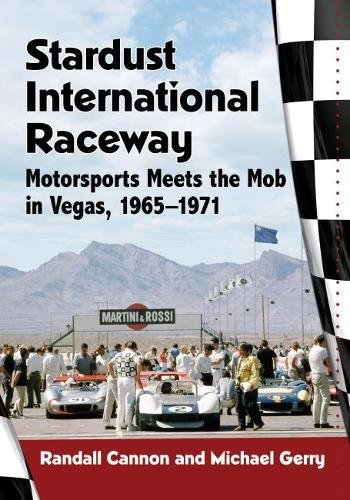
Professional motorsports found their way to Las Vegas in the mid-1950s at a bankrupt horse track swarmed by gamblers–and soon became enmeshed with the government and organized crime. By 1965, the Vegas racing game moved to Stardust International Raceway, constructed with real grandstands, sanitary facilities and air-conditioned timing towers. Stardust would host the biggest racing names of the era–Mario Andretti, Parnelli Jones, John Surtees, Bobby Unser, Dan Gurney and Don Garlits among them.
Established by a notorious racketeer, the track stood at the confluence of shadowy elements–secret wiretaps, casino skimming, Howard Hughes, and the beginnings of Watergate. The author traces the Stardust’s colorful history through the auto racing monthlies, national newspapers and the files of the FBI.

West Coast Wild
California s architectural anomalies
At the dawn of the automobile age, Americans predilection for wanderlust prompted a new wave of inventive entrepreneurs to cater to this new mode of transportation. Starting in the 1920s, attention-grabbing buildings began to appear that would draw in passing drivers for snacks, provisions, souvenirs, or a quick meal. The architectural establishment of the day dismissed these roadside buildings as monstrosities .
Yet, they flourished, especially along America s Sunbelt, and in particular, in Southern California, as proprietors indulged their creative impulses in the form of giant, eccentric constructions from owls, dolls, pigs, and ships, to coffee pots and fruit. Their symbolic intent was guileless, yet they were marginalized by history. But, over the past 40 years, California’s architectural anomalies have regained their integrity, and are now being celebrated in this freshly revised compendium of buildings, California Crazy.
Brimming with the best examples of this architectural genre, California Crazy includes essays exploring the influences that fostered the nascent architectural movement, as well as identifying the unconventional landscapes and attitudes found on Los Angeles and Hollywood roadsides which allowed these buildings to flourish in profusion.
In addition, California Crazy features David Gebhard’s definitive essay, which defined this vernacular movement almost forty years ago. The California Crazy concept is expanded to include domestic architecture, eccentric signage, and the automobile as a fanciful object.

Irish motorcycle racer Charles B Franklin, designer of the Indian Scout and Chief
The Indian has been the iconic image for American big V-Twins down the years, due in no small measure to the motorcycles designed by Charles B Franklin – the Indian Scout and the Indian Chief.
Charles Franklin was born and raised in Ireland where he quickly became involved in motorcycle racing during the pioneer years. He rapidly established himself as Ireland’s first big star of racing and was the first to represent Ireland in international motorcycle competition. In the Isle of Man TT he consistently finished in the top eight, and in 1911 claimed second place, a remarkable achievement in itself. But it was when he moved to Indian in the USA, where he became the Chief Design Engineer, that his genius really flowed. His designs catapulted Indian back into the forefront of motorcycle design in the 1920s and ’30s and his racing engines and motorcycles won much glory for Indian against stiff opposition. Franklin introduced remarkable improvements in side valve combustion chamber design that predated the work of Ricardo. He championed an holistic approach that popularized new features such as the semi unit-construction powerplant, helical-gear primary drive, double-loop full-cradle frames and a host of other improvements to the early motorcycles. Franklin’s Indians not only chronicles his life, but also sheds much new light on the history of Indian motorcycles and the often turbulent times of the Indian Motorcycle Company itself. It’s a much-needed book for all Indian fans and all who love the history of the classic American V-Twins.
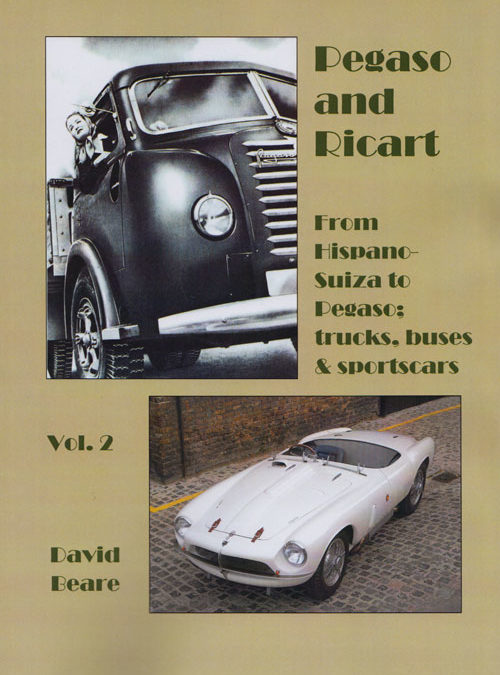
The second volume of the Hispano-Suiza and Pegaso books
The book covers the career of Catalan engineer Wifredo Ricart and his early designs and creations of the 1920s and 1930s in Spain- (Ricart y Peréz 1922-26), S.A. Automóviles Ricart (1926-28) and Ricart España (1928-30). Ricart then moved to Italy and was employed by Alfa Romeo as a consultant engineer from 1936 to 1945, where he was involved in the design and building of the Alfa Romeo Tipo 162 V-16 and the mid-engined flat-12 Tipo 512 racing cars, only for WWII to interrupt developments, so neither car was raced. It was during this period that Ricart clashed with Enzo Ferrari, who was racing-team manager for Alfa Romeo at the time.
In the early war years Ricart designed and built the extraordinary 28-cylinder 2,000bhp Tipo 1101 Alfa Romeo aero-engine, which had seven banks of four cylinders and was exceptionally light and compact.
Ricart, accompanied by a small group of loyal Italian engineers and ex-collegues, left Alfa Romeo and chaotic Italy in 1945 and returned to Barcelona. They were recruited by the government of Generalissimo Franco to create a new truck-building company, Pegaso, to produce desperately-needed trucks and buses for Spain, which they did with great success, designing and developing a number of modern industrial vehicles. Most of this took place in the ex- Hispano-Suiza factory in Barcelona, taken over by the government for this purpose, complete with the highly-skilled and experienced workforce which had previously built Marc Birkigt’s Hispano-Suiza T-35 aero-engines.
Part of Ricart’s remit was to educate and train a new generation of Spanish engineers, technicians and mechanics able to deal with modern technologies being used throughout Europe, but which were sorely lacking in Spain. The astonishingly advanced Pegaso Z-102 and Z-103 sportscars of 1951-1957 were in part the result of this training program, giving hands-on experience to legions of apprentices and enhancing Spain’s prestige as a new motor-manufacturing nation.
Only 86 Pegaso sportscars were made in total before Ricart was ordered to desist and concentrate on trucks and buses again by a reactionary management under political control. The political, social and economic influences which dictated Spain’s progress through the post-civil war era of 1939-1960 are also studied as they are important backgrounds to the evolution of the Pegaso company.
Mainly Spanish sources have been used to give an accurate picture of events leading up to Ricart’s creation of the legendary Pegaso sportscars and their subsequent careers in motorsport or on the Concours d’Elégance circuits. Many Z-102s have survived, despite determined efforts by Pegaso management in the late 1950s to erase them from the company’s history. Pegaso sportscars are now highly-prized worldwide.
A4 format, soft covers, 117 pages with colour and b/w images throughout, mostly contemporary with the period.
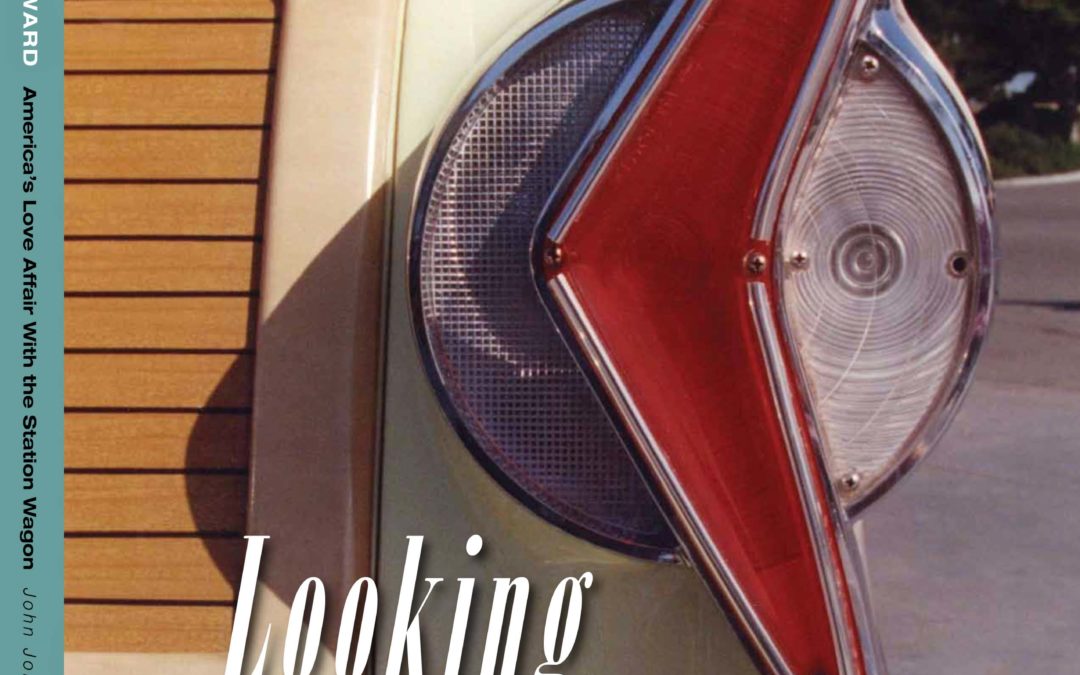
“Looking Backward” is the new photographic tribute to classic American station wagons from 1941 to 1992.
Looking Backward” is wonderful storytelling. It’s not just the story of station wagons, but a story of America. The book’s evocative photos have movement, driving us back through time. And its anecdotes about the vehicles, the designers and the auto industry itself make for a fascinating read. Above all it is an American love story, rekindled through these pages.




















